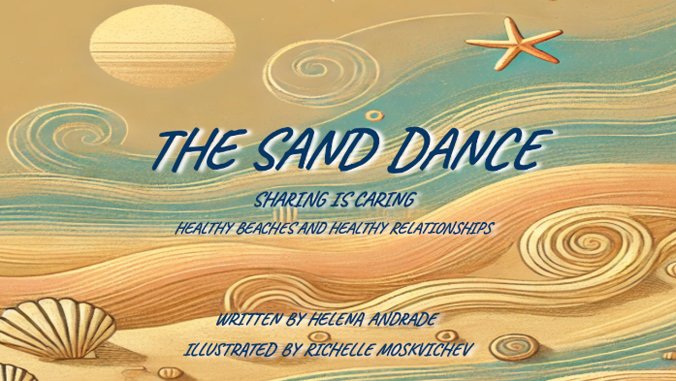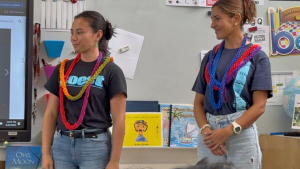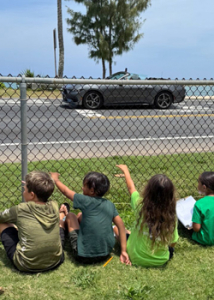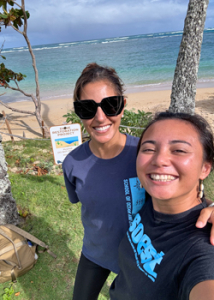Reading time: 2 minutes

A researcher-keiki collaboration aims to foster a deep connection to the land and community through storytelling. The Coastal Research Collaborative (CRC) at the University of Hawaiʻi at Mānoa developed The Sand Dance, a storybook that was inspired by a play researchers co-created with students at Kaʻaʻawa Elementary.
 Kammie Tavares and Helena Andrade talking with students
Kammie Tavares and Helena Andrade talking with students
“It’s a poetic tale about friendship and beach dynamics, where dunes and waves dance in harmony, much like the relationships we nurture in life,” Andrade said. “When children explore the environment with wonder and care, they grow into empowered, compassionate citizens who understand the importance of mālama ʻāina.”
The story, written by Earth Sciences doctoral student Helena Andrade and illustrated by CRC researcher Richelle Moskvichev, is available online and as an audiobook, and draws from Andrade’s years of coastal fieldwork in Brazil and Australia, her love for dance, and friendship with UH Mānoa Department of Urban and Regional Planning in the College of Social Sciences doctoral student Kammie Tavares.
 Kaʻaʻawa Elementary students making observations about the coastline
Kaʻaʻawa Elementary students making observations about the coastline
Tavares, who has engaged elementary to high school students in science education since the beginning of her academic career, shared, “As researchers, we have a kuleana to our community, including our keiki. Creating activities to explain complicated issues may seem challenging but in my experience teaching science through play is really heart-warming and has refined my own understanding of concepts. I highly recommend it!”
The Sand Dance is one of the newest products of Andrade’s CRC Keiki, the educational extension of the Coastal Research Collaborative which is led by Chip Fletcher in the UH Mānoa School of Ocean and Earth Science and Technology (SOEST).
Supporting stewardship and future leaders
Andrade’s doctoral research focuses on using beachrock to reconstruct sea-level history in Hawaiʻi. Understanding past sea-level fluctuations provides context for understanding modern trends and anticipating future changes. In Hawaiʻi, sea-level rise has already resulted in chronic coastal erosion, loss of cultural and ecological landscapes, and threats to freshwater aquifers and nearshore ecosystems.
 Andrade and Tavares at the site of the dune restoration project
Andrade and Tavares at the site of the dune restoration project
“If children grow up connected to their environment, as a valuable part of their communities, they learn how to mālama ʻāina, how to have their voices heard, and how to stand for what they love,” said Andrade when asked about the importance of involving children in environmental stewardship activities. “These are lifelong values that shape who they become and how they lead.”
As stewards of their coastline, students from Kaʻaʻawa Elementary started a dune restoration project. And recently, CRC Keiki participated in a coastal education workshop where second graders from Kaʻaʻawa taught first graders from Lāʻie Elementary about coastal erosion and mālama ʻāina.
The students also created artwork that can be viewed in the CRC Keiki Art Gallery titled “How do we love and protect our beaches?” Their pieces reflect their learning and connection to place.
